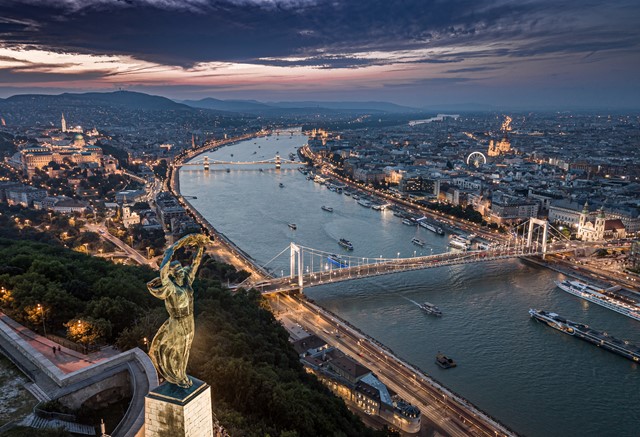At the foot of Gellért Hill, is Szabadság (Liberty) Bridge, one of Budapest’s eight spanning the Danube. Turning to look upriver, visitors can see the Elisabeth Bridge and beyond that Buda Castle on the right bank, the Chain Bridge, the enormous Parliament Building on the left bank, Margaret Bridge, and finally Margaret Island. Using Hungarians in forced labour, the Hapsburgs had built the Citadella after the failed 1848 revolution as a warning against future resistance. The warning was not well taken. By 1867, Hungarian political leaders had forced Vienna to accept renewed sovereignty for the Kingdom of Hungary within a Dual Monarchy.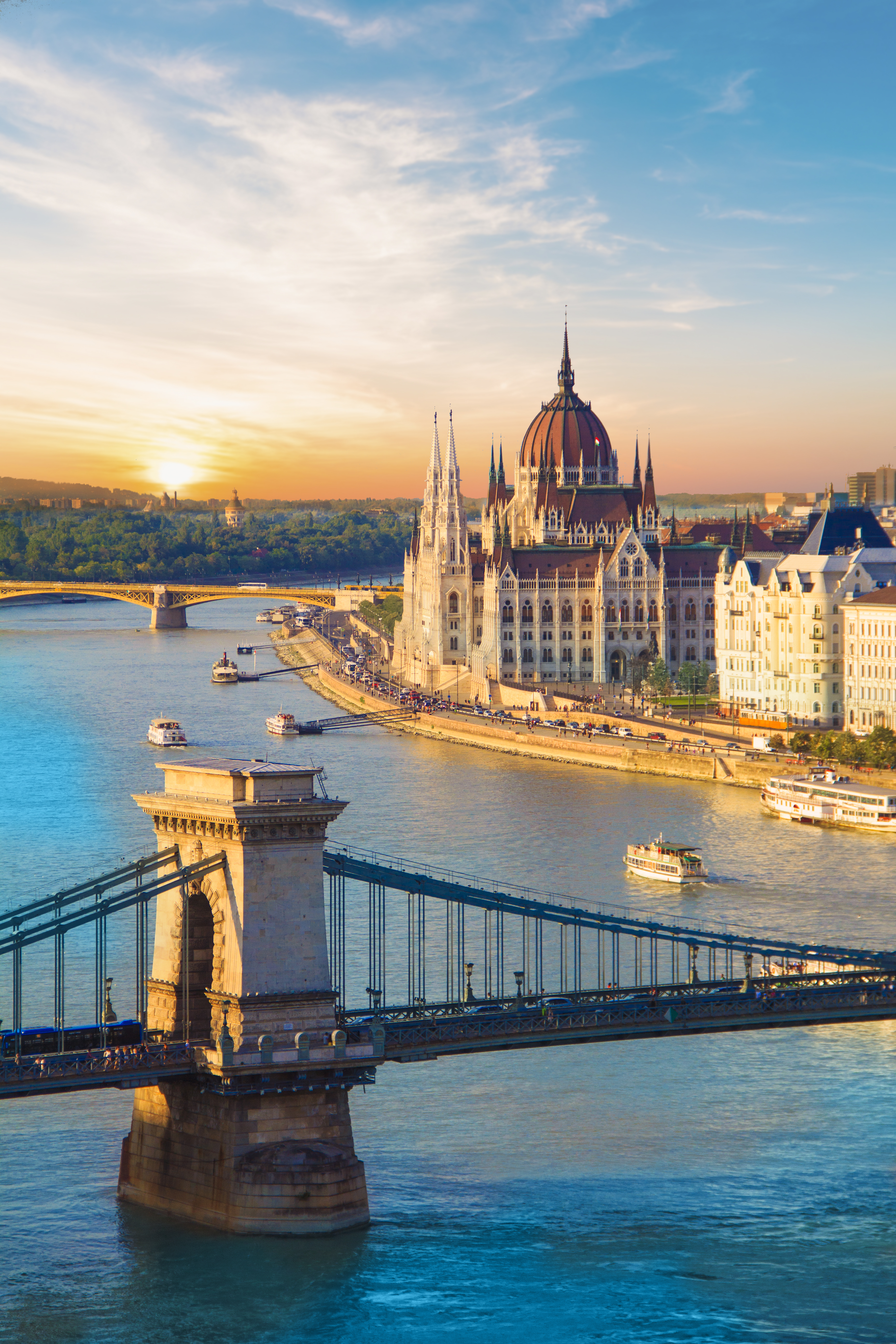
Chain bridge, Budapest
All around and beyond the Citadella, our visitor will discover an expanse of green, with gardens and forested parklands. “The iconic Gellért Hill has two sides,” explains Károly Palovics, a Budapest native and Country Manager Hungary for VGP. “One with a beautiful panorama, lots of visitors and a big city feeling, and the other side with flowers, where I walk the dog, I play with my children, and I know the name of the grocer in my neighbourhood.”
Figuratively speaking, Budapest and Hungary also have multiple sides. There is a part the visitor sees and a much larger portion that a tourist can scarcely comprehend. Hungary is an enigma, but a visitor can acquire glimpses, sensations, and tastes of what is Hungary while exploring Budapest. There is good-humoured speculation that Hungarians, with their language unintelligible to others and sometimes unique ways of thinking, were originally from Mars.
In fact, the Magyars, as Hungarians call themselves, came not from outer space but from somewhere east of the Ural Mountains, arriving to the Carpathian Basin in the very final wave of the Great Migrations. Their character evolved in their Pannonian homeland, sometimes stretching well beyond its present-day borders to conquer, rule, and mix with other peoples.
The Magyars were not Budapest’s first occupants. Celts were here when the Romans arrived in the first century AD. The Romans established a military base, then a provincial capital named Aquincum. They began abandoning the area by the 5th century. The Hungarians arrived in about 900 AD, lost control to the Ottoman Turks for much of the 16th and 17th centuries, then helped throw off the Turkish yoke only to be ruled by Hapsburgs. The Romans and Turks are especially known for developing Budapest’s abundant hot springs, and spas still exist where Romans and Turks bathed. The city offers several thermal bath complexes.
The visitor should continue by exploring Hungarian beginnings, at Heroes’ Square in Pest, situated at the end of Andrássy Avenue, a shopping boulevard, lined with historic buildings, and designated a UNESCO World Heritage Site. Heroes’ Square is an open-air, national statuary, constructed for the 1896 celebration of the 1,000th anniversary of the Magyar conquest of the Carpathian Basin. Towering over the square is a column topped by the Archangel Gabriel, who is holding the Crown of Saint Stephen, the first king of Hungary. At the column’s base are seven bronze horsemen, the chieftains of seven Magyar tribes, who, according to historical tradition, conquered the Carpathian Basin. Most prominent is Árpád, whose family dynasty, Hungarians believe, ruled the new homeland for several centuries. Flanking the column is a double colonnade containing bronze sculptures of prominent Hungarian kings and statesmen. The square includes a monument to all heroes who gave their lives to uphold Hungary’s freedom and national independence. In 1989, Hungarians reburied at Heroes’ Square Imre Nagy, the communist prime minister who was executed after leading the 1956 Hungarian Revolution.
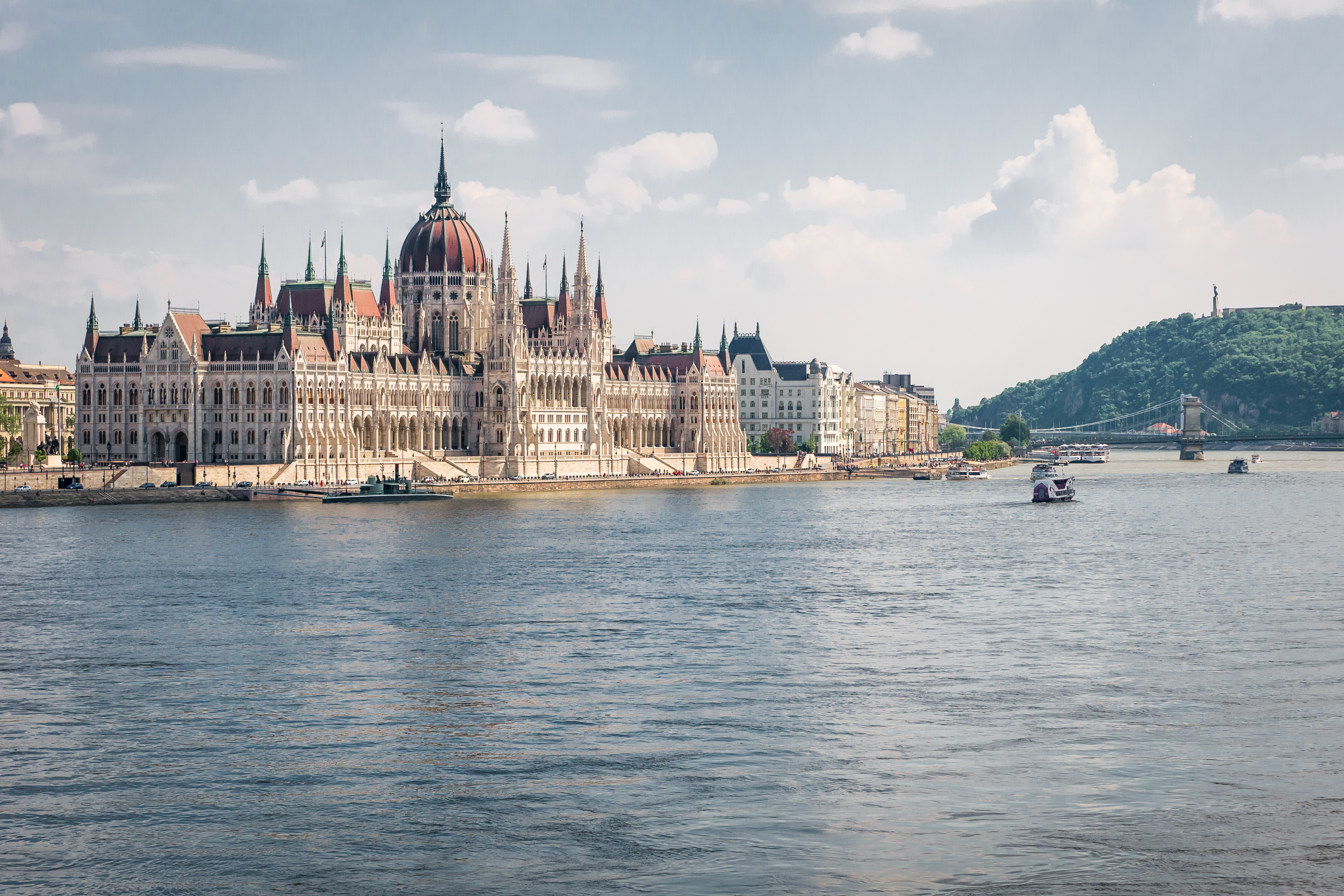
Parliament Building, Budapest
Flanking Heroes’ Square are the Museum of Fine Arts and Palace of Art. Beyond is the large City Park that, in addition to a lake and gardens, includes the Széchenyi thermal spa, a zoo, and the large Vajdahunyad Castle. The castle, built in a mix of Romanesque, Gothic, Renaissance, and Baroque styles, looks like it has been there for 1,000 years. In fact, it was completed in 1896 for the millennium celebration. After a morning spent absorbing history, a leisurely afternoon is well spent on Margaret Island. The island, approximately 2.5 kilometres long, offers swimming, water parks and spas, but for many it is a place to stroll through numerous gardens or to rent a pedal car accommodating two or a whole family. Special attractions include a musical fountain with light show and a water tower in Art Nouveau style. Both tower and fountain are UNESCO protected monuments.
Indeed, from Margaret Bridge all the way downstream to Liberty Bridge UNESCO has designated the Danube embankments, as well as the Buda Castle District, a World Heritage Site.
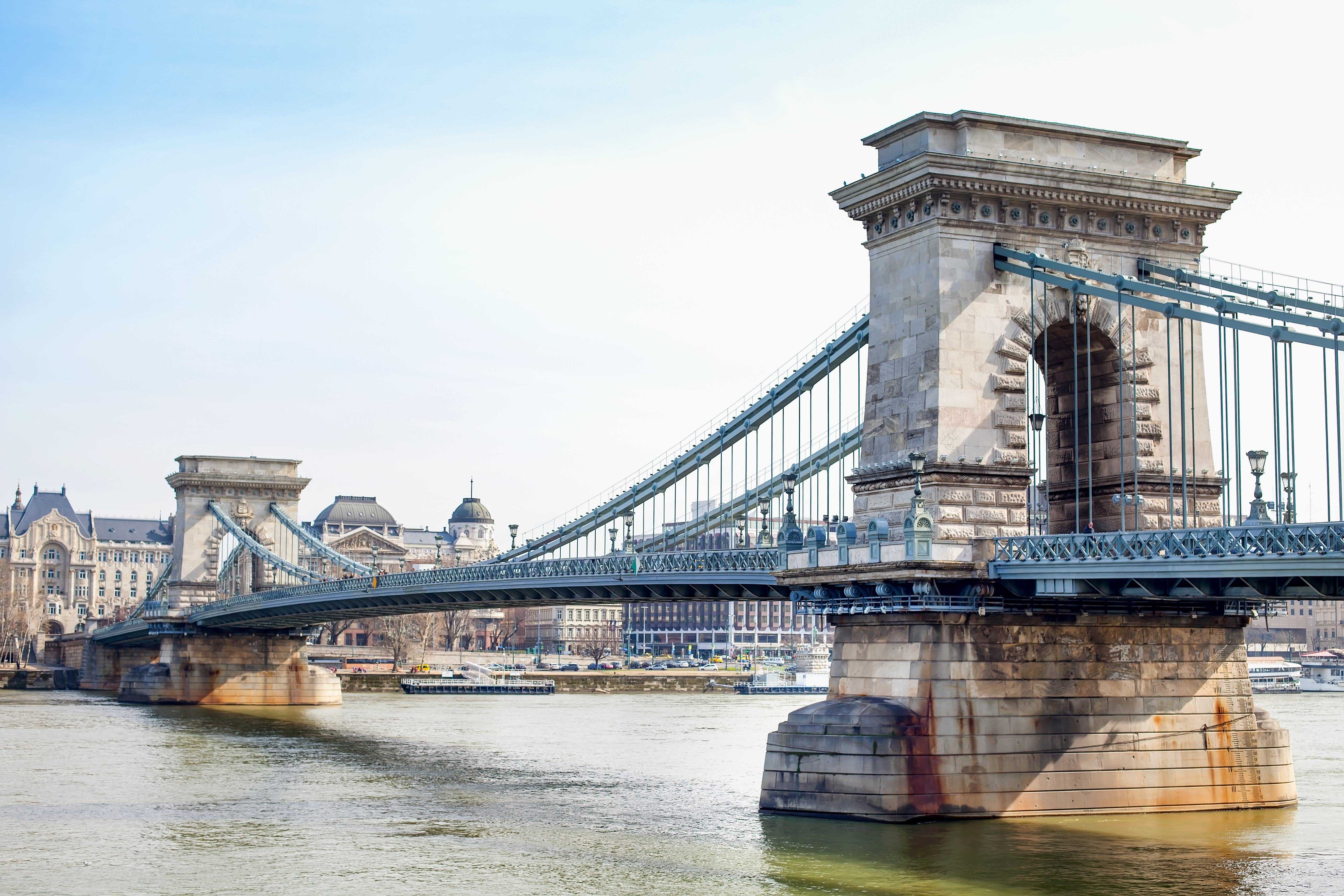
Chain Bridge, Budapest
Strolling about the Buda Castle must be near the top of any visitor’s list. In addition to magnificent views, the Castle houses the Hungarian National Gallery and the Budapest History Museum. Nearby is Matthias Church, which served as a mosque during the Turkish years, then was reconstructed in its present NeoGothic style. Austrian Emperor Franz Joseph and his wife Elisabeth were crowned King and Queen of Hungary there in 1867. Immediately beyond the church is Fishermen’s Bastion, an assembly of Neo-Romanesque towers, stairs, and colonnades. It is said that in the Middle Ages the fishermen’s guild was responsible for defending the castle walls at that location.
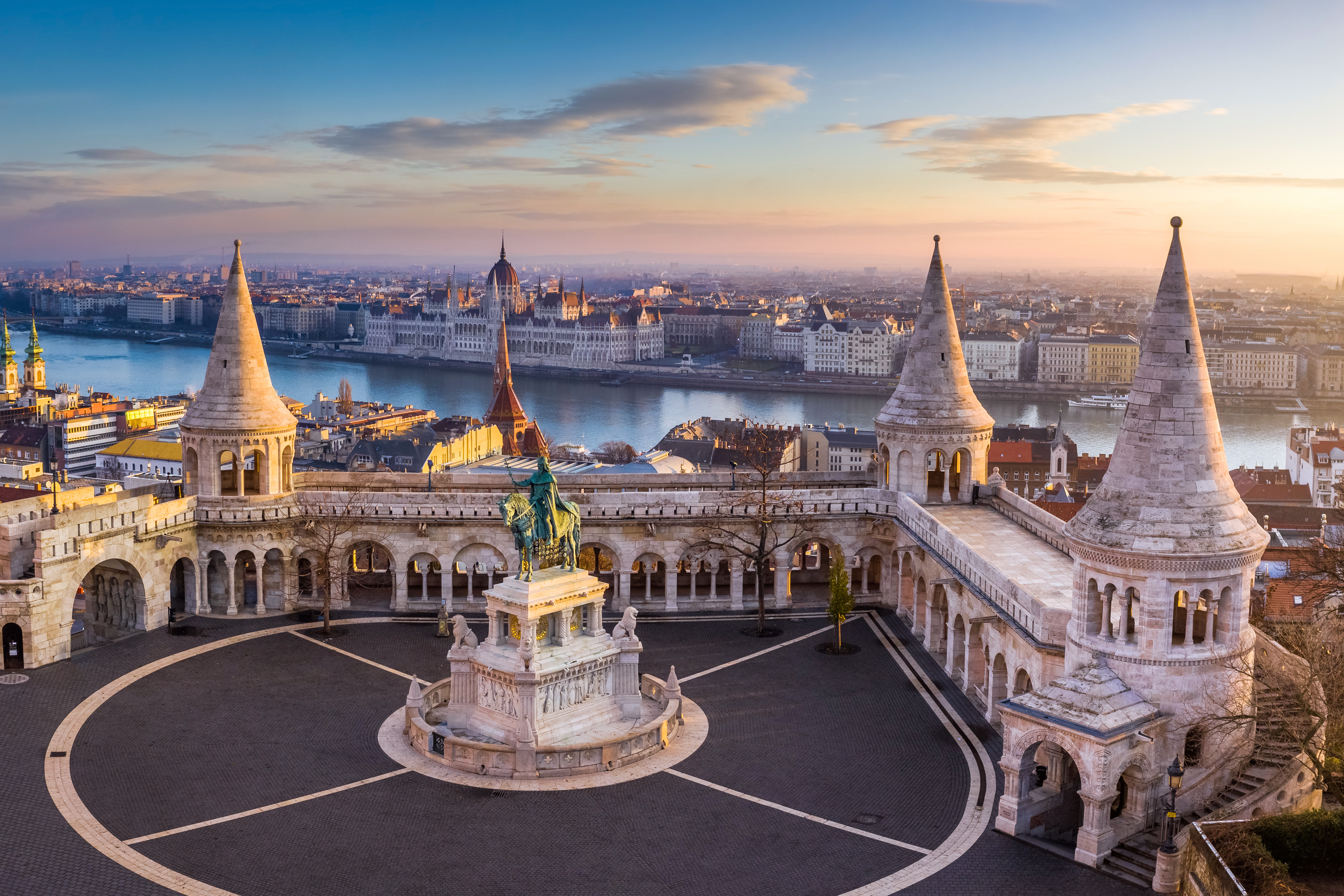

Fisherman’s Bastion with statue of King Stephen I
Today’s bastion was built at the turn of the 19th and 20th centuries. It affords a great view of the Parliament Building on the opposite bank of the Danube. Probably no Budapest structure has been more photographed and admired than its massive Neo-Gothic Parliament Building. Constructed during 1885–1904, it symbolized Hungary’s partial sovereignty within the Dual Monarchy. To reach the Parliament, one now can descend the hill and cross the Chain Bridge. Completed in 1849, this suspension bridge, guarded by a pair of large lions at both ends, was the first to connect Buda and Pest. Largely destroyed during World War II, it was rebuilt and reopened in 1949.
Walking the riverside promenade towards Parliament, the visitor will pause in solemn reflection upon encountering 60 iron pairs of men and women’s shoes, a memorial to hundreds of people who were shot along the embankment during World War II by Hungarian fascists. Surely it is now time to take a break, to reflect on what has been seen, and to taste the local foods, wines and, of course, coffee. A good place to stop might be on or near the square in front of the NeoClassical St. Stephen’s Basilica, just 15 minutes from Parliament.
Hungarian cuisine bears much in common with Austrian fare, and yet affirms its gastronomic independence by borrowing and blending liberally from adjoining ethnic regions Hungary once dominated. Abundant use of peppers contributes greatly to the character of Hungarian food. A ubiquitous street food is lángos, a disc of deep-fried, garlicky dough topped with sour cream, shredded cheese, or various other toppings. A sweeter street food is tube-shaped kürtőskalács, created from sweet dough roasted on a spit over hot coals. For a sit-down meal, an excellent start would be halászlé, a spicy fish soup. Goulash is arguably the national dish, and can be eaten as a soup or stew. Among many possible entrées are paprika chicken (csirkepaprikás), typically served with Central European-style dumplings akin to gnocci, meat-stuffed peppers or cabbage leaves, or lecsó, a stew of peppers, tomatoes, onions, egg, and sausage. If Hungarian food seems designed for consumption with wine, well, that may be true. The wines are excellent and diverse. Twenty-two official wine regions are spread throughout the country. The visitor will not go far astray in choosing any Hungarian wine, but ideal is to ask the locals, because they know.
When the day nears its end, Budapest will soon be at its very best. As darkness falls, the lights come up on the bridges, the Parliament, the castle and the hills of Buda. A varicoloured glow from all along this UNESCOdesignated embankment reflects in the Danube. To appreciate his lifelong home, suggests VGP’s Károly Palovics, one needs simply to be still and to let it sink in. “Sitting on the bank of the river and just watching the city and the water,” he relates, “or stopping on the Szabadság Bridge for a long and quiet look on the Danube and Gellért Hill is so pleasant.”
